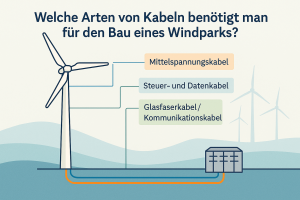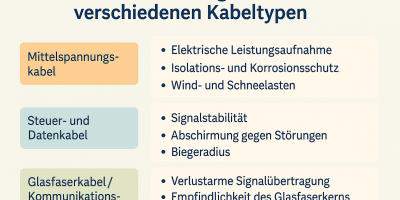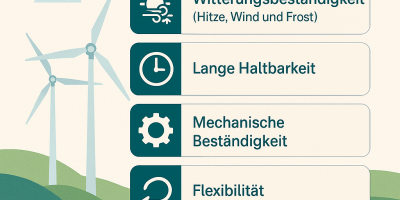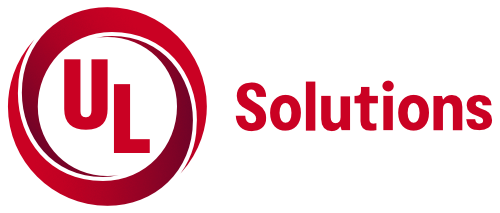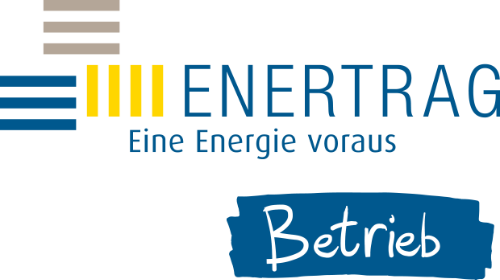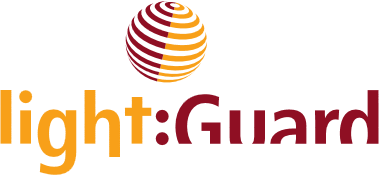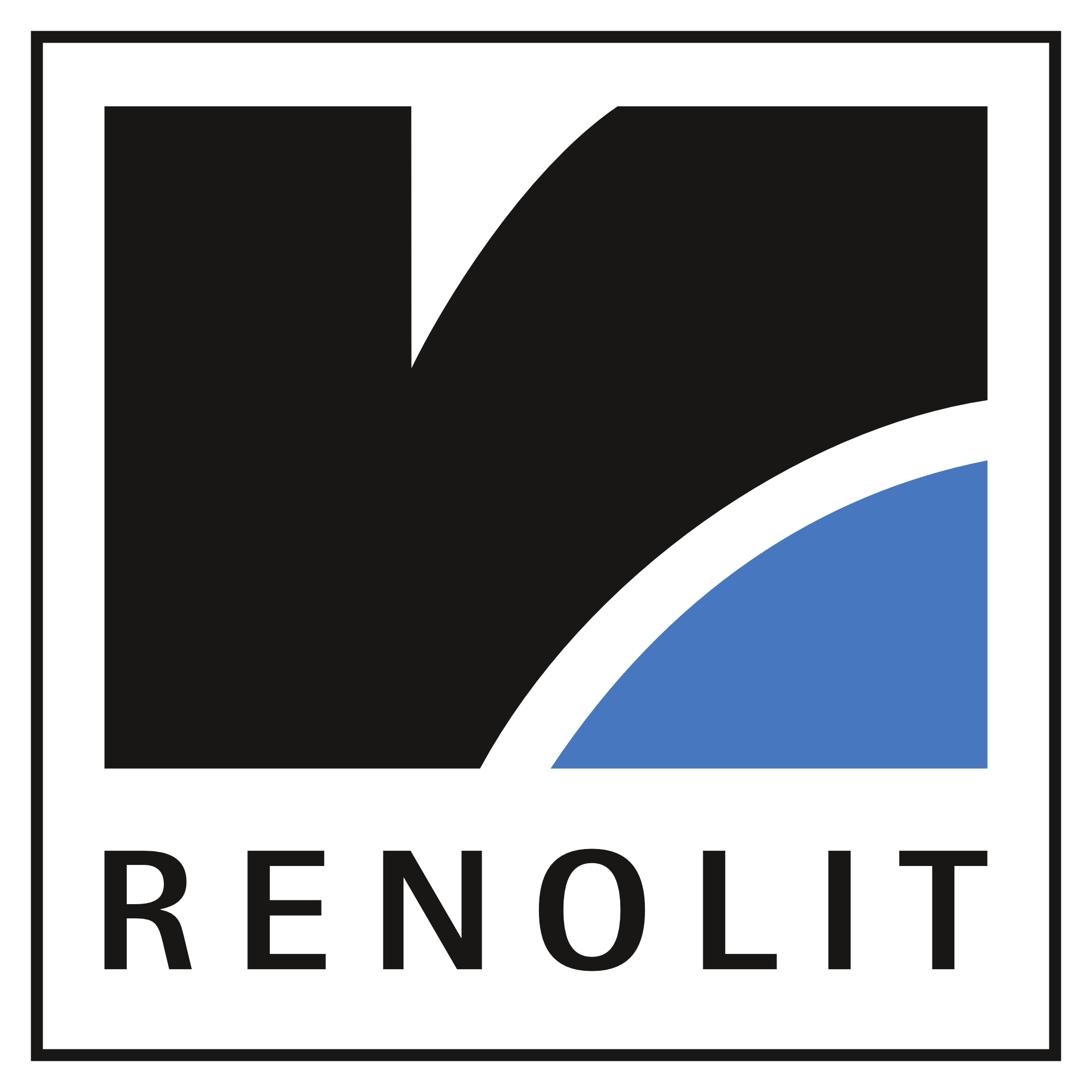Cabling is a central element of every wind turbine and has a significant influence on the efficiency, safety and profitability of a wind farm. Already in the planning phase of a wind energy project, project developers and operators have to make important decisions about the cable infrastructure. What types of cables are needed? Where do they run? What are the technical requirements? And how can later failures or power losses be avoided?
This guide provides a comprehensive overview of all the main cable types used in the construction and operation of a wind farm. For each type of cable, we examine its specific function, the typical challenges during use and important technical requirements.
Overview: What types of cables are used in the wind farm?
When building a
The following cable types are generally used for wind farms:
- Medium voltage cable (MV cable)
- Low-voltage cable (LV cable)
- Fiber Optic Cable / Communication Cable
- Control and data cables
- Lightning protection cables
- Grounding and equipotential bonding cables
- Special cables (e.g. for
offshore wind farms or in mobile segments of the plant)
These cables take over
different tasks – from energy transmission to communication
to protection against overvoltage and earth faults.
1. Medium voltage cable (MV cable)
Function
Medium Voltage Cable
connect the individual wind turbines with each other as well as with the
substation. They transport the generated electrical energy with
voltages typically between 10 kV and 36 kV.
Typical designs
- Copper or aluminum conductors
- XLPE insulation (cross-linked polyethylene)
- shielding (e.g. Cu braid or
conductive plastic)
- mechanical protective coatings for
Underground laying (e.g. steel strip)
Challenges
- High current-carrying capacity with a long service life at the same time
- Thermal stress due to current flow and environmental influences
(temperature, soil)
- Mechanical stress during underground laying or offshore use
- Shielding against electromagnetic
Disturbances
- Protection against moisture and corrosion – especially in offshore wind farms
Special requirements
- Standards such as DIN EN 60228, VDE
0276 or IEC 60502-2
- Pressure tightness and longitudinal watertightness
(LWD) for offshore or humid locations
2. Low voltage cable (LV cable)
Function
Inside the gondola
and the tower, LV cables are used to power individual components
– such as hydraulic systems, lighting, heating or sensors.
Typical designs
- Copper conductor, flexible design
- PVC or rubber insulation
- Halogen-free, flame-retardant materials
Challenges
- Vibration and bending stress on moving plant components
- temperature resistance, especially for offshore installations or
in heated enclosures
- Fire protection requirements in confined spaces
Special requirements
- Halogen-free, low
Smoke generation (e.g. HFFR cables)
- UV and ozone resistance in
Outdoor
3. Fiber optic cable/communication cable
Function
Fiber optic cables are
essential for data transmission within a wind farm:
enable communication between wind turbines, substations, SCADA systems and
Master display.
Typical designs
- Single-mode or multi-mode fibers
- With strain relief and outer sheath (PE
or PUR)
- With or without metallic reinforcement
Challenges
- Mechanical protection during burial (stones,
Ground movements)
- Moisture protection, especially in offshore environments
- Fiber optic cable break due to
Bending load
Special requirements
- EMC insensitivity
- Standards such as IEC 60794-1, EN
Reference 50173
4. Control cable and data cable
Function
Transfer control cable
Control pulses on components such as pitch system, generator control,
transformers or operational monitoring systems. Connect data cable
Sensors, actuators and internal control units.
Typical designs
- Multi-core copper cables
- Shielding against electromagnetic
Disturbances
- Flexible insulation for moving
Uses
Challenges
- EMC interference due to nearby power cables
- Bending and torsional load due to movable nacelle
- Temperature differences indoors and outdoors
Special requirements
- CE, UL, or CSA approval depending on the
Exporting country
- Flame retardancy, halogen-free
5. Lightning protection cables
Function
Conduct lightning currents
controlled from the rotor blade tip to the nacelle and the tower to the
soil. Indispensable for the protection of electrical components and for
personal protection.
Typical designs
- Galvanized steel or copper conductors
- Copper strips capable of carrying lightning current, or
-ropes
- Connection to Grounded Arresters
Challenges
- High current load with a short duration (up to 200,000 A)
- Mechanical and thermal resistance
- Corrosion protection in salty air
Special requirements
- DIN EN 62305-3
- Protection concept in combination with
Earthing system
6. Grounding cables and equipotential bonding cables
Function
Ensure that
no dangerous potential differences occur in the wind farm. You protect
Humans and technology alike face voltage differences and guide
residual currents.
Typical designs
- Copper ropes with high cross-sectional thickness
- Grounding tapes in the nacelle and in the
Foundation
- Connection of all metallic
Housing parts
Challenges
- Durability in the soil (corrosion resistance)
- Possibility of laying ground and contact with the
Soil
- Secure connection with foundation earthing
or Ringerder
Special requirements
- DIN VDE 0100-540, 0185-305
- Lightning current carrying capacity
7. Special cables for offshore wind farms
Function
Offshore wind farms
additional requirements: long distances, damp and
salty climate, extreme temperatures and constant movement by waves.
Typical designs
- Subsea cable (submarine cable)
- Polyethylene (PE) sheath or
Specially sheathed steel armor
- Extra long life cycle (>30 years)
Special challenges
- Pressure and salt water resistance
- Weather resistance (heat, wind and frost)
- Long shelf life
- Flexibility
- Longitudinal watertightness
- Difficult handling when inserting under
Water
- High costs due to special production
and installation
- Fast delivery, availability and processing
Special requirements
- Standards such as IEC 62067, IEC 60228
- Acceptance by international
Testing institutes
Planning and project planning: What do operators of wind farms have to consider?
When selecting and
Planning the cable infrastructure of a wind farm should include the following aspects:
The following are taken into account:
1. Location analysis
- Topography, subsoil, moisture
- environmental factors (UV radiation,
Salinity, temperature fluctuations)
2. Grid connection requirements
- voltage level and
Transformer connection
- Protection and communication requirements
3. EMC planning
- Separation of power and control cables
- Shielding and installation to
EMC criteria
4. Economic feasibility study
- Choice of durable cables reduced
Maintenance and replacement costs
- Investment in high-quality materials
pays off in the long run
5. Documentation and compliance with standards
- Seamless cable lists and routing plans
- Certificates for fire behaviour,
Environmental resistance, CE conformity
The cabling of
Wind turbines is more than just laying cables – it is a
critical component for trouble-free, safe and efficient
Operation of a wind farm. The selection of suitable cable types, tailored to
location, system concept and requirements, determines the quality and
Durability of the entire infrastructure.
wind farm operators and
Project developers should therefore build up specialist knowledge at an early stage, with experienced
planners and manufacturers and in the selection of components
rely on certified quality.











